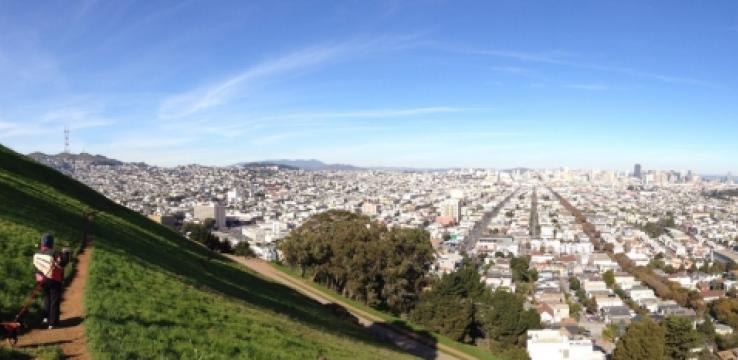Was it Friedrich Nietzsche who said, "All truly great thoughts are conceived while walking?" Yes, it was.
As urbanists, we talk a lot about the importance of walkability but maybe not enough about the pleasures it can bring. We invited San Francisco walkers of all sorts to muse on the subject. Their stories are below.
1 | Glen Park Canyon
Though I walk here as often is possible, I still can’t believe that this 70-acres of wildness is in San Francisco proper. Just a few blocks from my house, Glen Park Canyon may have man-made trails and weekend jumpy castles installed near the rec center but for the most part, it’s a magical urban refuge, a natural wonder of tree-filled grassland, striking rock outcrops, an active creek bed and accompanying riparian habitat. There are frequent coyote sightings, red-tailed hawks soaring overhead and great horned owl’s nest at the big eucalyptus at the fork in the trailhead. Most mornings you can see Sutro Tower reveal itself through the fog as you hike toward the rear of the canyon. At these moments, the place reminds me of nothing so much as Caspar David Friedrich’s 1818 masterpiece, Wanderer above the Sea of Fog.
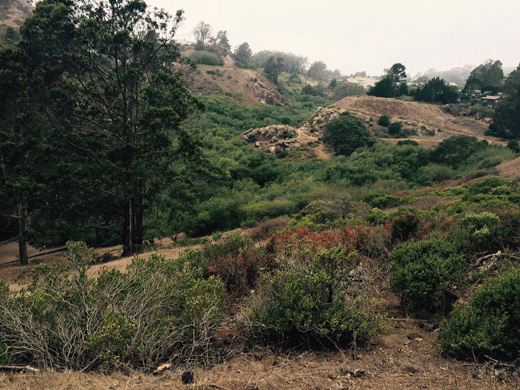
There’s a veritable history book in here. Adolph Sutro purchased 76 acres of the canyon in the 1850s, which he named “Gum Tree Ranch” after the blue gum eucalyptus trees he had planted there. The first commercial manufacturing of dynamite in the U.S. occurred in the canyon in the 1860s. In 1889, the Crocker Real Estate Company bought the canyon to develop a neighborhood that would attract homebuyers but their decision to get their attention by building a mini-zoo / amusement park was short lived. It’s hard to grasp that in 1958, the California State Highway Department proposed a plan to widen O’Shaughnessy Boulevard, which curves around the park’s western side, as part of a Crosstown Freeway —and it’s such a relief that a group of feisty housewives kept it from happening in what was among the earliest incidents in the freeway and expressway revolts of the 60s and 70s.
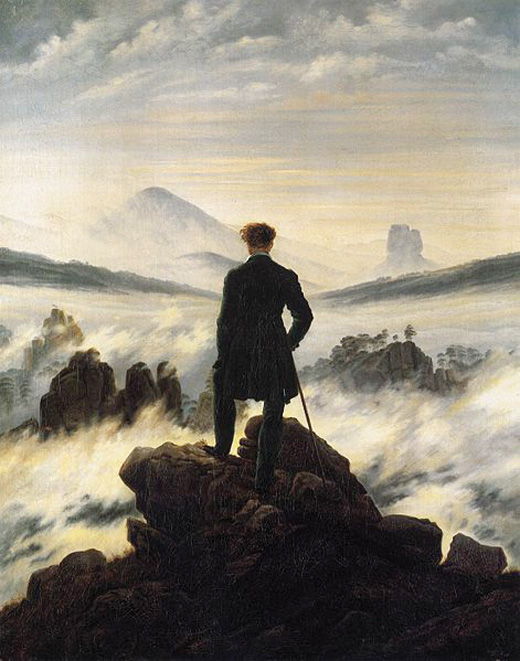
But all this history isn’t typically on my mind as I ascend the steeper slopes of the park. No matter how many times I walk through, there’s always a slightly different route to discover.
Allison Arieff is editorial director of SPUR.
2 | Every Street
In the fall of 2009, while living in San Francisco, I decided to train for a long-distance charity walk. As gyms bore me, I set out each evening after work on the streets of the city to strengthen my legs. I quickly discovered that the city was so enthralling and so walkable, that regardless of the charity event, I made it my goal to walk every street in San Francisco. To document my progress, I began to keep a master map and a blog to showcase the best pictures from each walk. In the first three years I walked over 500 miles.
What I found in the slower pace of walking the streets rather than, say, biking or jogging them, was that I was able to engage the environment with all senses, including talking to passersby, thus building an intimate appreciation for the entire city – its smells, its textures, and its people. On a Sunday afternoon walk in Bernal Heights back in 2009, for instance, www.allisonwalkssf.com, after admiring some mosaic art in the sidewalk, I asked a local for information about the artist. I was pointed in the direct of a house across the street where the artist, named Collette, was standing in her front garden, very happy to chat with me about her work. San Francisco is a passionate town with layers of ethnic influence, creativity, and funk that are best appreciated on foot.
While my husband’s career moved us away from San Francisco in 2012, I do visit annually to keep at this goal and am now up to 604 miles walked. I consider the project ongoing, and will continue chipping away at the miles and documenting them on my little blog, even if it takes me until the age of 84 to do so. But in the meantime, I hope others take on the same silly challenge of walking every street in San Francisco because it is one of the few major cities in the US where such a feat is both possible and positively worth the effort.
Allison Baltzersen writes about her quest to walk every street in San Francisco at allisonwalkssf.com.
3 | Walk to Work
It takes exactly sixty minutes to walk from my home in Parnassus Heights to my office in the Mission. Every morning I traverse Cole Valley, ascend to Mount Olympus, and make my way down through the Castro to Mission Dolores. Every evening I retrace the same path in the opposite direction. These twelve thousand steps, repeated religiously each and every weekday, have become a ritual I could never do without.
In the morning the air is thin and the thoughts are light. The pace is steady but placid, indulging the desire to delay the beginning of the workday by just a little. A thermos of hot coffee filled to the brim in my hands, I leave behind the foggy bottom of Cole and sip and walk my way up 17th Street. On clear days the view is majestic. As I descend to the sunnier side of town the pace accelerates, and by the time I enter the last stretch I find myself marching, steps and thoughts in line with the day ahead. I love the way back even more. I let the life of the neighborhood in and abandon myself to mindless people watching. When I hit 17th again, I see Sutro tower in the distance piercing through the clouds. By the time I reach the top of the hill, the thoughts of the long workday have dissipated and my mind is clear.
Ghigo DiTommaso is an urban designer with Gehl Studio.
4 | The Embarcadero
“…Kim and I walk from there, across Herb Caen Way, named for the great San Francisco Chronicle columnist, past Pier 40 and Pier 38 and up out on the wide expanse of the Embarcadero. I tell you, no matter what month of the year, no matter the weather, the people you see out there are always in a good mood and you always get a lung full of clean salt air that leaves you refreshed and invigorated…I love that walk along the Embarcadero so much, I could tell you about every pier, every stretch of the way, shoot, almost every crack in the pavement, I’ve done that walk so many times, and enjoy it so much, but if I described every detail for you here in my little book, I’d take some of the fun out of it for you. You’ve got to get out and take your own walk and experience for yourself all the sights and sounds and smells of that great walk along one edge of the city by the bay.”
Bruce Bochy is general manager of the San Francisco Giants and author of A Book of Walks (excerpted above).
5 | Chinatown to North Beach
Chinatown Community Development Center, which has been in existence for 38 years, has four offices. I spend a lot of time walking back and forth from our Chinatown location on Clay Street near Kearny to the one on Grant in North Beach. It’s great walking between the two offices. I meet with staff at both places as I think it’s important as a representative of the organization to understand how all the arms of that organization function.
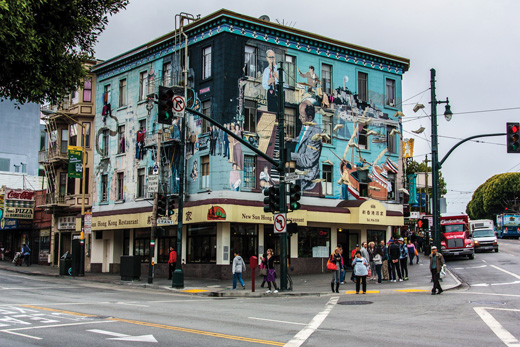
One of the highlights is where Columbus, Grant and Broadway meet at the intersection between North Beach and Chinatown. There’s New Sun Hong Kong restaurant, with the “Jazz Mural” by Bill Weber on the side of the building. I love how there is a public plaza here that includes the art installation by artists Brian Goggin and Dorka Keehn called Language of the Birds, which was part of a larger streetscape effort the CCDC has been working on with other neighborhood groups to make sure there’s a walkable Broadway from the Tunnel to the Embarcadero. A few years back, we did an event called Noodle Fest here where we had pasta noodles from North Beach and Chinese noodles from Chinatown to highlight the heritage of both cultures. This intersection really is a marker of different cultures coming together.
From there, I walk by my new favorite noodle shop on Kearny then past the International Hotel, which is 100 percent senior affordable housing and an important symbol of all the history and advocacy in the 60s and 70s that led to it, past another important marker for Chinatown, the new City College site, and then Portsmouth Square. Then I get to the Clay Street office… and start the next meeting!
Cindy Wu is Deputy Director of Operations, Chinatown Community Development Center and is Planning Commissioner, City and County of San Francisco.
6 | Russian Hill
A passion for cities makes living east of Van Ness Avenue nearly mandatory for me. Admittedly, the choice means I give up space for location and the ability to take daily urban hikes along dense, active streets. Russian Hill, where I’ve lived for many years, offers me several delightful walking options. I can easily head for such places as North Beach/ Chinatown, Union or Chestnut Street or downtown/ South of Market. I walk down the hills but at 83, I find on the return that Muni is my best friend.
Aside from the desire to get some exercise, I walk to watch the endless flow of people making use of the city in countless ways. From Russian Hill to Washington Square, the Embarcadero, City Lights book store, Stockton Street Chinatown, Market Street between 3rd and 5th, Yerba Buena Gardens, even Macy’s — my idea of delightful destinations for a big city walk. Yet another reason I walk — to continue my career long curiosity about retail in cities. As a city planner I am grateful for small shops. They are essential to the construct of the city and to a lively, vital urban atmosphere. But how many cupcakes must be sold at a downtown location in order to satisfy the landlord’s appetite for rent? Do I fail to understand the magic of price point? Am I overestimating the number of cupcakes that need to be sold? I’ll just keep on walking in San Francisco.
Dean Macris served as San Francisco’s Planning Director on three different occasions over the past 47 years.
7 | Marina Green + Crissy Field
My former office building at Fort Mason provided a spectacular view along the Marina Green and Crissy Field towards the Golden Gate Bridge. Newbies in town may not realize the view wasn’t always that way. As a young park ranger, I remember the National Park Service removed a large rabbit warren of non-historic military buildings on the hill. This resulted in the increasingly popular Fort Mason Meadow and path to the Marina. Until recently, I would often jump off the bus at an earlier stop in the morning just to walk through the Fort Mason Meadow to savor the view — and the foresight of the early park planners.
I would occasionally commute by bike along the Marina Green and Crissy Field to the Golden Gate Bridge. In the 90s, through the generosity of the Haas Family and the Parks Conservancy, Crissy Field had a “makeover” and was transformed from an asphalt Army airfield into the wonderful promenade trail along the beach and wetland that we enjoy today. If my time allowed, I would linger to watch the expert wind surfers and kite boarders doing their amazing ballet-like moves just off the Crissy Field beach.
Today you can observe the ongoing transformation of Doyle Drive as it is placed underground to eventually provide exciting new parklands and trails over the tops of the highway tunnels. There is a robust public design process underway to get this latest park building opportunity right. As the design competition began, I urged the designers to bring both their talent and humility to this latest park transition. Less is more at this spectacular crossroads.
Frank Dean is General Superintendent of the Golden Gate National Recreation Area. His park service career began in 1976 when he accepted a position as a ranger in the GGNRA.
8 | The Mission
Until recently, I had two kids at different preschools at different ends of the Mission. It was just far enough that I had to hurry to drop off or pick them both up on time but not far enough that it warranted the hassle of going down to BART and back up with a stroller. So every day I walked over two miles, once, sometimes twice a day. It wasn’t exactly a picturesque or even particularly pleasant experience — I was hustling in work clothes and heels, pushing a stroller, shepherding a meandering child for part of it — but it had its charms.
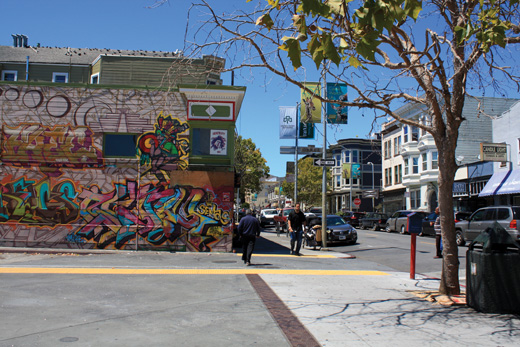
My son checked out Mission murals along the way. I walked a different route each day. We enjoyed music and kettle corn at the Mission Community Market. I followed all the new restaurant openings on Valencia.
I thought hard about when it was better to cross two streets at a corner when you had both lights or keep going in one direction (I never did figure it out).
We stepped around poop.
I assiduously avoided blocks with ice cream purveyors and toy stores. We made friends with a construction crane operator. We saw a former mortuary transform into a space for hipster minigolf.
And, I got a lot of exercise without making time for it. This routine came to an end when my older son headed to kindergarten, my younger son’s school left the Mission for Silver Terrace and we moved to the border of Glen Park. I realized a month ago that after nine years of the Mission, my attachment to that neighborhood was coming to an end. It’s a little sad, and it’s kind of okay. San Francisco has to change and adapt — and so do I.
Kristy Wang is SPUR’s Community Planning Director.
9 | The Harry Steps
There’s something wonderfully improbable about San Francisco’s dozens of staircase streets. On one hand, they’re the simplest, most direct way up and over the steepest stretches of our city’s thigh-burning, Buns of Steel-approved topography. On the other hand, as approaches to infrastructure go, they’re not exactly widespread beyond our borders. In Manhattan, which never saw a hill it didn’t want to decapitate, a throughway like Glen Park’s Harry Street steps would be just about inconceivable. It’s steep, long, wooded, a little shabby, and bursting with greenery. The people who live on it hike up and down from their cars to houses that feel like they’re hanging off a small mountain, their Fitbits buzzing approvingly at 10 a.m.
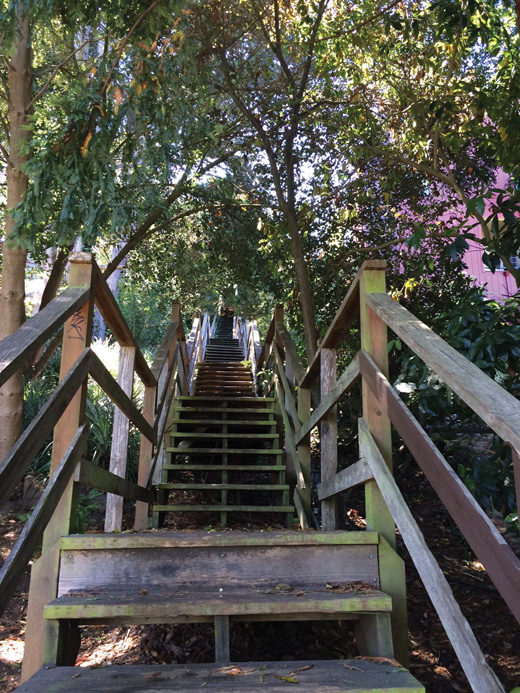
Walking up Harry Street feels like a small but meaningful victory for everything that’s unfussy, civic minded, and outdoorsy about San Francisco. In this small domain, the virtues of public access — and a direct route from A to B — score a point for good urban logic. And cardio.
Lamar Anderson is web editor for San Francisco magazine.
10 | The Bayview
I’m a Bay Area native and have spent a lot of time in San Francisco over the years, but I had never spent much time in Bayview Hunters Point. That is, until two years ago when I started working on a project out there. As an architect, I often spend a lot of time on a project site to understand the constraints and opportunities. But here, my partners at envelope a+d and I realized that the “site” we needed to inhabit and understand was the neighborhood itself.
Bayview Hunters Point is a neighborhood that you often only hear about when something bad happens, but it’s also a neighborhood that’s full of rich experiences. The rumble of trucks and rail stands as a reminder that for over a century, this has been a significant part of the industrial heart of the city. But Third Street is more than just a conduit for the light rail and industry. It has long been the Market Street of Bayview. Like Market Street, it feels at once both huge and small in scale as your eye darts from the wide boulevard to the small mom and pop stores. It’s a neighborhood in transition, where old and new meet constantly. There are new hotspots like All Good Pizza with its picnic tables and giant yard and old institutions like Sam Jordan’s Bar and Grill, opened decades ago by the first African American to run for mayor of San Francisco. Most of all, Third Street is about the people who inhabit it. As an African American, I find it a seemingly rare San Francisco street experience where African Americans are the majority, not the minority. But I also love that it is has a greater diversity, with several different races and ethnicities contributing to the richness of the street life.
Liz Ogbu runs her own multidisciplinary design and consulting practice, Studio O.
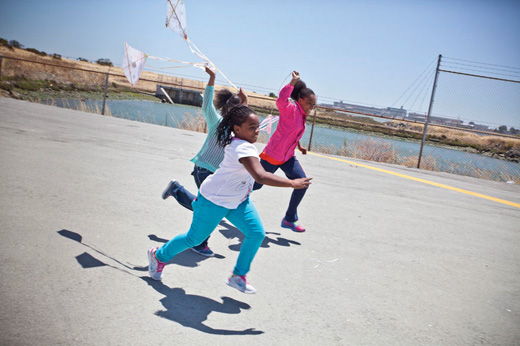
Photo by Anne Hamersky (10)
11 | Noe Valley
It looks like I’m walking — shoulders hunched, hands in pockets — but really, I might be writing. I do the hardest work of writing and editing this way.
It started years ago, when I was working at home, writing for magazines. Whenever I’d finished my two or three or however many months of reporting and I was ready to turn it into a story, I’d walk around my neighborhood and assemble dialogue and scenes in my head. Down Sanchez Street in Noe Valley, until it dead ends at 30th, where the wind gusts. Across Church Street, and up Dolores, up and over the hills. I’d walk until I could see the whole story, start to finish. Then I’d walk home and start typing.
Once I finished a draft, I’d print it, attach it to a clipboard, and then head back out into the neighborhood to read the draft aloud and handwrite my edits. (Note: If you happen to stop in front of a house and write on a clipboard for a long time, someone may come out of the house and ask if something is wrong.) I generally believed that if you write for a living and work at home you shouldn’t indulge eccentricities, because the next thing you know you’ve gone feral. This was my one exception. Now, I work in an office. But when I have to think hard about a story, I’ll still step outside. And when I have to think harder, I’ll start walking.
Douglas McGray is the editor in chief of California Sunday magazine and Pop-Up Magazine.
12 | Ocean Beach
Ocean Beach is best early in the morning before the sun breaks over the dunes and when very few people are about. I start a lot of my days here at the water’s edge, feeling awe, feeling small. I go to Ocean Beach to run but more often than not I break my stride to explore and document. Someday, I’ll find a shark’s tooth. In the meantime, there is so much to observe: gulls swarming; pelicans in formation; snowy plovers skittering en masse; crows scavenging; feathers, lots of feathers; rainbowcolored sea foam; jellyfish that look like crystal globes or little blue sail boats; bright sparks of sea glass; the most exquisite patterns in the sand left by the changing tide; so many sand dollars, rotting seals and dead sunfish; trash, lots of trash; clouds and light that are always changing; fishermen and surfers; seawall graffiti created by artists in the night. Ocean Beach is raw and beautiful even when it is grey and howling and feeling like the end of days — which is a lot of the time. I breathe deep with the city at my back, my eyes on the Pacific as it churns, and the sand stretching north and south into the fog.
Katharine Norwood is Strategy Director at Nurun, a design and product innovation consultancy. Follow her on Instagram at @idrewnancydrew.
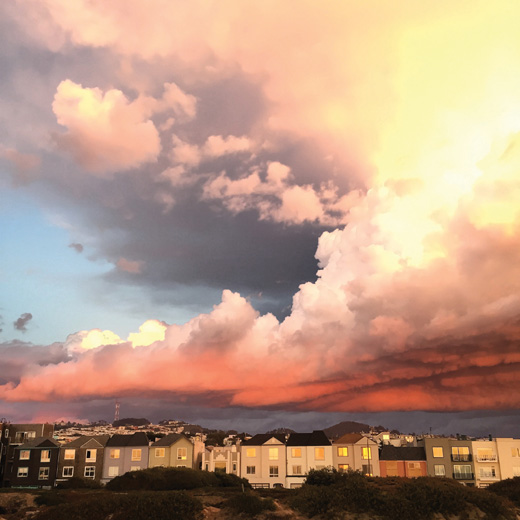
Photo by Katharine Norwood.
13 | Leaving Los Angeles
When I lived in Los Angeles, there was only one measure of time and distance: car travel time. It was a harsh calculus that determined not how long it would take to navigate to a concert, dinner out with friends, or museum exhibition but whether or not the trip would happen at all. For the past three years in San Francisco, I’ve been relatively car-free. This past January, I sold my car. Now when I think about how far and how long, it’s through the lens of transit, bicycling, and most often, walking — something almost entirely unfathomable in L.A. — has become second nature.
The time I spend traveling by foot each day, unlike by car, is no longer the draining, wasteful byproduct of a commute; it’s an opportunity to be mindful during the morning, to delight in the sights and sounds that reveal themselves only when an observer is passing by at 3 miles per hour.
I lived in L.A. for over 20 years but if you asked me to describe the details of any particular drive, I would be at a total loss. Ask me now and I can recall with ease a treasure trove of discoveries large and small, and the serendipitous pleasures experienced while walking in San Francisco.
For most of my adult life, driving was always just a brutal means to an end; now walking is the desired end itself.
Natalie Burdick is the Membership and Volunteer Director of WALK SF.
14 | Fort Mason
Binoculars in hand, walk north up the road from the intersection of Bay and Franklin into Fort Mason, stopping at the community garden. The garden’s peripheral flowering shrubs and trees host nesting orioles (below) and sparrows, and offer a comfortable stopping point for dozens of migratory species traversing the Pacific Flyway in spring and fall. Keep going north over the small hill, past the youth hostel and down the steps to McDowell Road; the Fort Mason pedestrian path hugs the top of the rocky cliff above a remnant stretch of original bay shoreline. It’s a place to examine slope meeting water and city meeting bay. The Franciscan basalt just meets the water, and the deeply shaded north-facing position of both land and water let their respective dark blue-black color lines mirror one another.
Megan Prelinger is a co-founder of the Prelinger Library in San Francisco and author of Inside the Machine: Art and Invention in the Electronic Age.
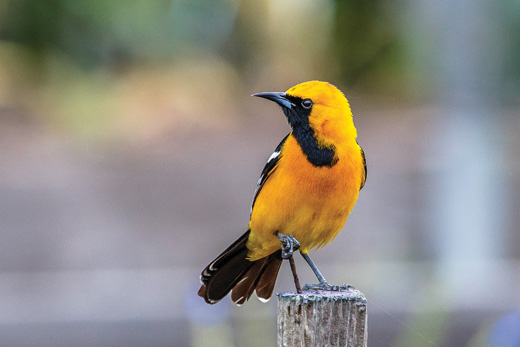
Photo by Bob Gunderson.
15 | The Tenderloin
I find giving people walking tours of the Tenderloin is the best way for them to appreciate the neighborhood. It also allows me to see it through new eyes. I got a striking example of this when I gave a tour to Leonard Pitt, who writes books on historic Paris neighborhoods. Lenny grew up in Detroit in the 1950s. He has lived in Berkeley for years but like many longtime Bay Area residents he was not familiar with the Tenderloin. As we walked past Eddy Street SRO hotels and art deco parking garages, Lenny was entranced. He said he felt like he had been transported back to the 1930s, recognizing that nearly all the buildings on Eddy from Hyde to Mason were present in those days. Lenny’s fascination with the Tenderloin was palpable. He stopped and studied almost every building, getting more excited as we proceeded.
Lenny was not the first person I have brought through the Tenderloin who expressed appreciation for the neighborhood. But as someone who knew historic Paris neighborhoods inside and out, his excitement about the Tenderloin was telling. It reminded me that the neighborhood’s streetscape was special.
Why has one of San Francisco’s most walkable neighborhoods been so overlooked?
It is true that walking through the Tenderloin can reveal less desirable sights. There may be drug dealers or someone sprawled out on the sidewalk. But walking here you’ll find an energy and sense of community that is all too rare these days.
Some walk through the Tenderloin with their heads down in the hopes of avoiding eye contact with passers by. But such fear is unwarranted and causes walkers to miss the architectural splendor that excited Lenny Pitt and others. The best way to walk through the Tenderloin is by looking up, as that takes you on a wondrous trip to San Francisco’s past.
Walking through the neighborhood improves people’s perception of the Tenderloin. When visitors see the beautifully restored lobbies of SRO hotels, they are often dumbfounded. They have only heard about rundown SRO hotels, which is what the media covers. Yet the Tenderloin has dozens of SRO hotels that have been restored to their historic luster, all while providing affordable housing for the poor.
Walking tours are such an essential part of the Tenderloin experience that they are now available Tuesday through Sunday at the Tenderloin Museum, 398 Eddy Street. The tours enable everyone to see what the trained historical eyes of Leonard Pitt found during his walk with me. I can’t say everyone will get as excited as Lenny, but visitors will end the tour feeling a lot more comfortable about the Tenderloin than when they began.
Randy Shaw is Director of the Tenderloin Housing Clinic and spearheaded the effort to create the national Uptown Tenderloin Historic District. He is the author of The Tenderloin: Sex, Crime and Resistance in the Heart of San Francisco.
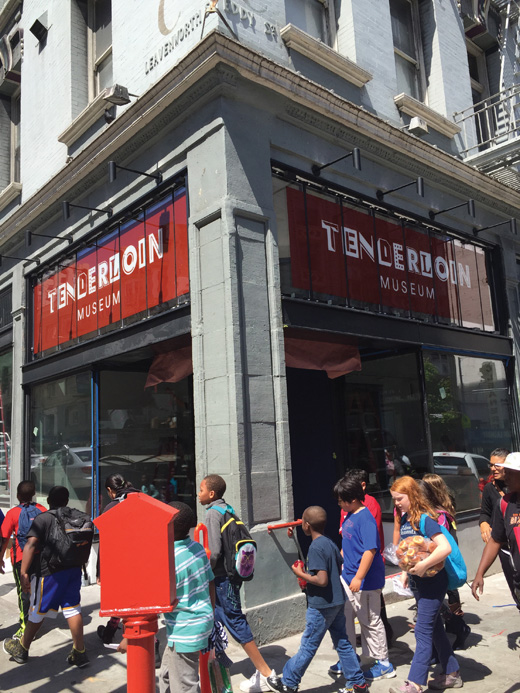
Photo courtesy Randy Shaw.

